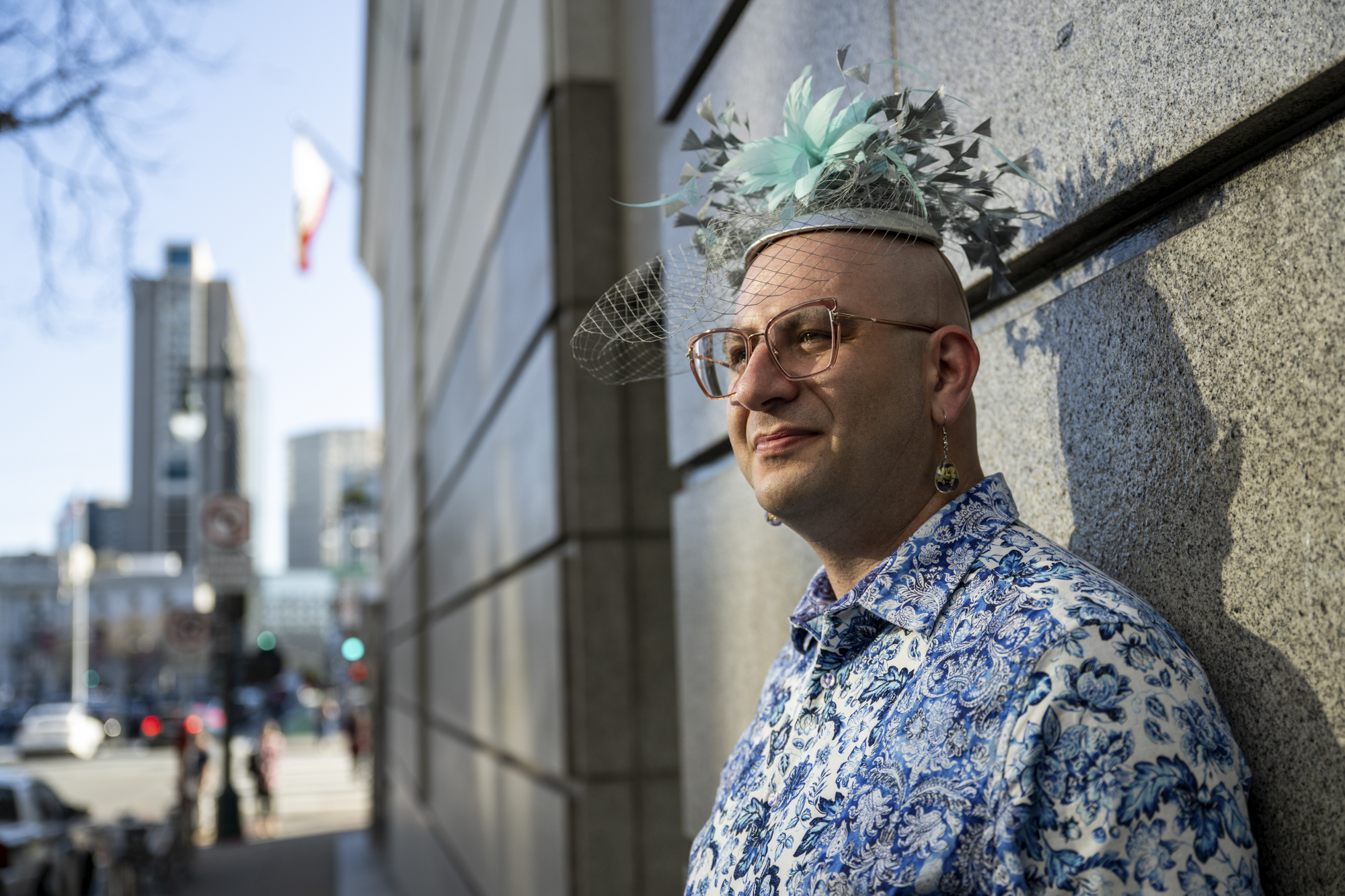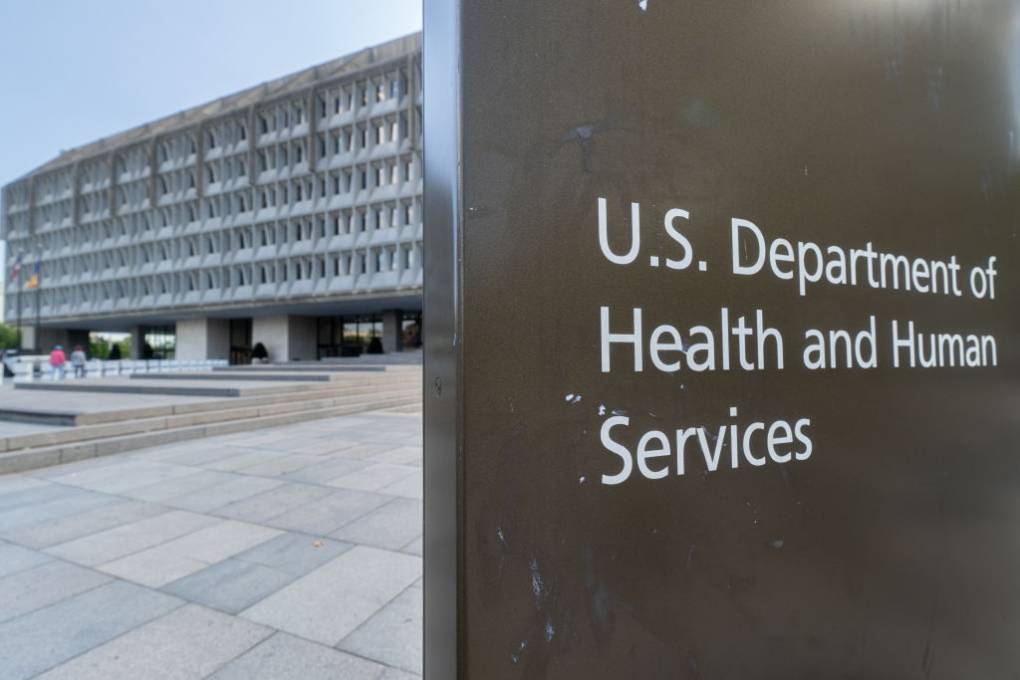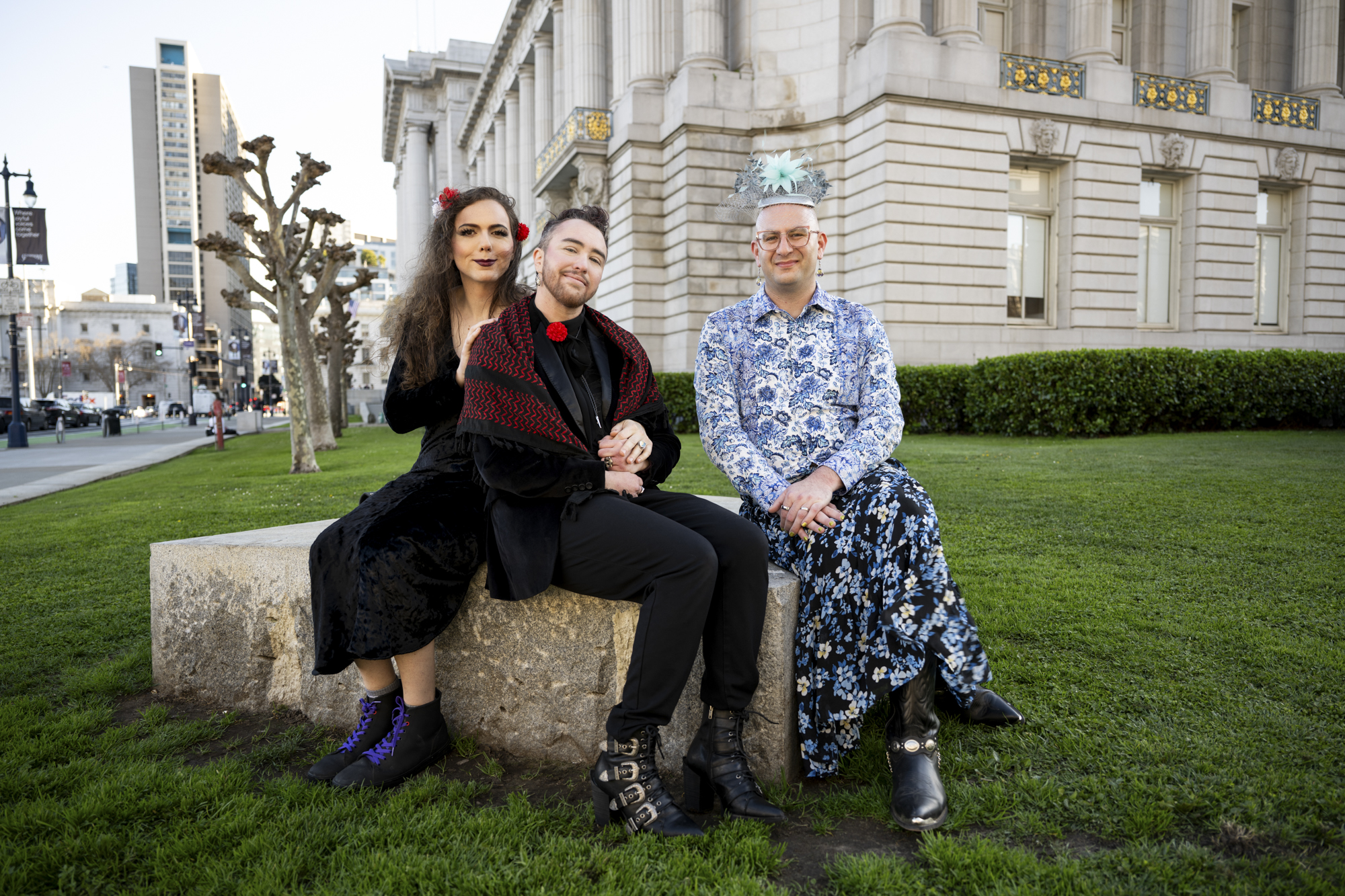Mere hours after his Jan. 20 inauguration, President Donald Trump issued an executive order stating that the federal government would recognize only two sexes, male and female. As a result, the State Department immediately eliminated the “X” gender as an option and suspended its previous policy that permitted transgender, intersex and nonbinary people to update gender markers on their passports.
Updating Your Name and Gender on CA, Federal IDs: What to Know After SCOTUS’ Passport Ruling

After a back-and-forth in the federal courts following a lawsuit filed by the American Civil Liberties Union, the conservative-leaning Supreme Court has ruled that the Trump administration can enforce this policy.
But the latest update is not the end of the road for trans people and gender markers, San Francisco lawyer Alexis Levy said, since “this decision doesn’t dispose of the lawsuit in general.”“That will take several more months at least,” Levy said. “This was an emergency stay, which is a very specific subset that’s become a very frequent feature in this administration, and the Supreme Court during this administration.”

California still allows people to change their gender marker or use “X” on state-issued documents like their birth certificate or their driver’s license.
Levy, who specializes in name and gender marker changes through their nonprofit Identity Affirmation Workshop, said they’ve seen clientele increase “pretty significantly” since the November election.
“People saw the writing on the wall,” said Levy, who has been hosting free gender marker and name change clinics with other LGBTQ+ organizations, including the Oakland LGBTQ Center. “The whole process can be really daunting,” they said.
But what does changing your name or gender marker on official government documents now entail? KQED spoke to Levy about what trans, intersex and nonbinary people can expect during the lengthy process.
Please bear in mind that this is not legal advice, and it’s always a good idea to talk to an expert about your individual situation before taking concrete action — especially because current events may have superseded some information online. Jump straight to: Organizations and resources offering advice about documentation changes for trans folks.
Jump to:
- What should I know about updating my gender marker on a U.S. passport right now, and what could the risks be?
- How long does it take to update your name or gender marker on your documentation?
- What are the costs associated with officially changing your name or gender marker?

What’s the current situation for trans people’s U.S. passports?
Back in June, the U.S. District Court of Massachusetts ruled that the State Department “must allow people with a gender identity different from their sex assigned at birth to self-select the sex designation on their passport,” leaving a brief window of time in which trans Americans could update or renew their documents accordingly.
But that window is closed once again. Following the Supreme Court’s decision on Nov. 6, all new, renewed and replacement passports will now use the gender marker assigned at birth — and the ‘X’ gender option is no longer available.
While there’s still another decision to come from the First Circuit Court of Appeals left, which could lead to another brief window in which trans people can once again adjust their gender markers, this timeline is “really hard to predict,” Levy said.
“My advice remains the same: that it is better to have a passport with the wrong gender marker on it than it is to have no passport at all,” they said.
In addition to the confusion and anxiety caused by the frequent policy changes, the situation remains “demoralizing” for many trans, intersex, and gender non-conforming people across the country, Levy said — people who were already reeling from the Trump administration’s January executive order affecting their passports.
A 24-year-old trans man told NPR in February that after filing paperwork to change his gender marker to male on his passport before Trump’s inauguration, he received a passport marking him as female. Euphoria actor Hunter Schafer detailed on TikTok how her new passport lists her as male, despite having female on her government documents since she was a teenager.
“I’m just sort of scared of the way this stuff slowly gets implemented,” Schafer said in her social post, explaining her concerns about possibly being forced to out herself in front of a border patrol agent.
“We are never going to stop existing. I’m never going to stop being trans,” Schafer said in her February video. “A letter and a passport can’t change that.”
“There’s really no purpose for policies like this one, apart from making the people it affects’ lives miserable,” Levy said.
Can people who have changed their gender marker or have “X” still use their passports to travel?
The U.S. State Department’s site said that a passport with an “X” marker or that “lists a sex other than [your] sex as defined by the White House executive order” will “remain valid until its expiration date,” and that you can still use it to travel in and out of the U.S.
Acknowledging the anxiety some may have around traveling these passports, Lambda Legal, an organization serving LGBTQ+ people, said it’s not aware of any confirmed incidents “where individuals have faced problems leaving or reentering the United States using an unexpired passport issued prior to the 2025 policy changes — including those with an X gender marker.”
“There have also been no verified reports of passports being confiscated upon reentry,” the group’s website reads.
However, stressed Lambda Legal, travelers should weigh their personal circumstances, “including how you use your passport, your plans for international travel, and your individual safety needs and risk tolerance.”
Which documents can I change my name and/or gender markers on?
There is no one universal application where you can change your name or gender marker for all of your documents and changing one does not prompt another document to change. You have to do it “manually 100% of the time,” Levy said.
Levy said the four major documents people have historically wanted to change to reflect an update to their name or gender identity are:
Federal:
State:
California, along with several other states, still allows people to change their gender marker or use “X” on state-issued documents like their birth certificate or driver’s license.

Other documentation or information that a person might update to reflect a new name or correct gender marker could potentially include: green cards, visas, foreign passports, citizenship certificates, health insurance, insurance and information around banking and credit cards. And name changes, especially, don’t have to be confined to government documents, Levy said.
“Anywhere where your name is attached to it is somewhere where eventually you’re going to have to update it,” said Levy, who went through the name change process themself last summer.
These updates could include mail, magazine subscriptions or their identity at a club or nonprofit.
How can I legally have a change of name and/or gender identity recognized?
To update a lot of your major documentation to reflect a new name and/or correct gender marker, you’ll need to go to your local county court and obtain a court order.
In California, you can ask for the court to recognize:
- A change of name “to make it match your gender identity” or
- A change of gender identity or
- A change of both name and gender identity at the same time.
Depending on your individual situation, you will have to fill out at least two — and potentially several more — forms, which will be filed with your local clerk (and be sure to make a copy of all of them). See which forms might be required to change your name and/or gender identity in California.

Some local courts will ask for their own additional forms to file, which you can check with your court’s clerk. Levy notes that some counties may ask for more biographical information for background-checking purposes, including height, weight and place of birth.
After you’ve provided the information required by your county, generally, the clerk will then send the forms to a judge, who will then sign a name change and gender recognition order.
This certified signed order helps you change your other official documents, like state IDs. You will need multiple copies of the signed order to change each document.
This process is also available to people born or married in California but who now live out of state.
Are there any documents I can change without a court order?
Levy said you could change your gender marker on California documents — such as birth certificates and driver’s licenses/IDs — without a court order, although you’ll still be asked for some “specific supporting documentation.” Name change recognition, however, almost always needs a court order.
Some people may still consider obtaining the court order regardless of having their gender marker changed, even if it’s possible to do so in California without the order, Levy said. That includes people born in another state or country that does require a court order to make such a change. Californians may also consider obtaining the court order as a kind of insurance against potential future changes in federal policy regarding self-selection on gender markers, Levy said, since the Constitution mandates that the federal government. As well as other states, must respect a state court order.
The bureaucratic process of updating a birth certificate without a court order can also be intricate and specific, according to Levy. And since any administrative mistakes on the applicant’s part can lead to long delays, they recommend you consult a legal expert if you choose to go this route.
Do I need permission for a physician to change my name or gender marker?
No. After a 2018 law, California residents do not need a physician’s letter for a name and gender change petition.
Once I’ve obtained my court order recognizing my name and/or gender identity change, how can I start updating my documents?
Updating your Social Security card
You can change your name on your Social Security card through the Social Security Administration.
The card does not list a person’s gender marker, but the agency said it “maintains information in its computer records on everyone who has a Social Security number, including name, date of birth, and sex.”
The California Department of Motor Vehicles — as well as the State Department, banks, insurance companies, credit card companies and more — often use the Social Security database to cross-reference and confirm people’s identities. Changing a name with the Social Security Administration is almost always a prerequisite before updating other government IDs (except birth certificates) and insurance, Levy said.

Lambda Legal, an organization serving LGBTQ+ people, notes that as of Jan. 31, the Trump administration has directed the Social Security Administration to “stop processing gender marker updates” associated with their records.
Advocates for Trans Equality, a trans advocacy group, has noted that Social Security benefits are not dependent on sex. However, “when applying for Medicare, Medicaid, or Obamacare health insurance through the marketplace, use the sex that matches Social Security,” the group said.
Updating your driver’s license or RealID
These are state documents, so you can update your name and/or your gender marker through your local Department of Motor Vehicles. According to the state, you should change your name on your Social Security card before you request a name update on your driver’s license or RealID.
Updating your birth certificate
You can update your name and your gender marker on your birth certificate through the California Department of Public Health. Updating your name requires a court order, but updating your gender marker does not.
Updating your passport
You can update your name on your passport through the U.S. Department of State. Jump back to: What should I know about updating my gender marker on a U.S. passport right now, and what could the risks be?
Updating your marriage certificate
If you had a public marriage, you can update your name or gender marker on your marriage certificate with the State Registrar. If you had a confidential marriage, you can update your marriage certificate with the county recorder’s office that issued the certificate.
How long would changing my name or gender marker take?
According to the state, the decision period in which a judge signs the name change and gender recognition order is six weeks. But in many cases, this can vary, Levy said, and the process can be delayed even longer if there are mistakes in your paperwork.
And once the court order is approved, “each of those individual documents takes different periods of time,” Levy said. “So California birth certificates take about four months. … Usually [with] Social Security, you do that, and you get a new card in the mail within two weeks.”
How much money will changing my name and/or gender markers cost?
Name and gender marker changes can be a pricey process, with just some of the costs including:
- A court petition is $435 to $450, with some fee waivers available for people whose household income is below a set amount or who receive public benefits if a judge approves it.
- Each copy of a certified order is $40. (This is free if you qualify for the fee waiver.)
- Reissuing an updated California birth certificate costs $26.
- Social Security cards are reissued for free.
- An updated driver’s license is $36.
- Passport renewals are $130.
Do I need to circulate my name in the local newspaper?
No. If you are changing your name according to your gender identity, you do not need to have your name change printed in a newspaper.
What if I am worried about my safety?
Court documents are usually public records. If you are in the state witness program or the Safe at Home address confidentiality program, you can ask to keep your name change confidential by asking your local court.
Do I need to be a certain age to update my name or gender marker?
If a person is under 18 and in California, they would need parental permission to change their name and gender marker on their state ID.
Young people can also use their preferred names and pronouns in public schools without having to show any legal documentation. KQED has a guide further explaining the rights of trans students in public K–12 schools.

Where can trans folks find support and resources around documentation changes?
Levy holds regular clinic with their firm Identity Affirmation Workshop and said the service is pro bono to anyone living in California or, if they live out of state, born or married in the state.
Other organizations offering advice in this area:
- Trans Equality
- Lambda Legal’s help desk
- Trans Lifeline
- More about the name and gender marker changing process if you are incarcerated.
KQED’s Natalia Navarro contributed to this report.
This story was originally published on March 6 and has been updated to reflect that Alexis Levy’s nonprofit is called Identity Affirmation Workshop.
